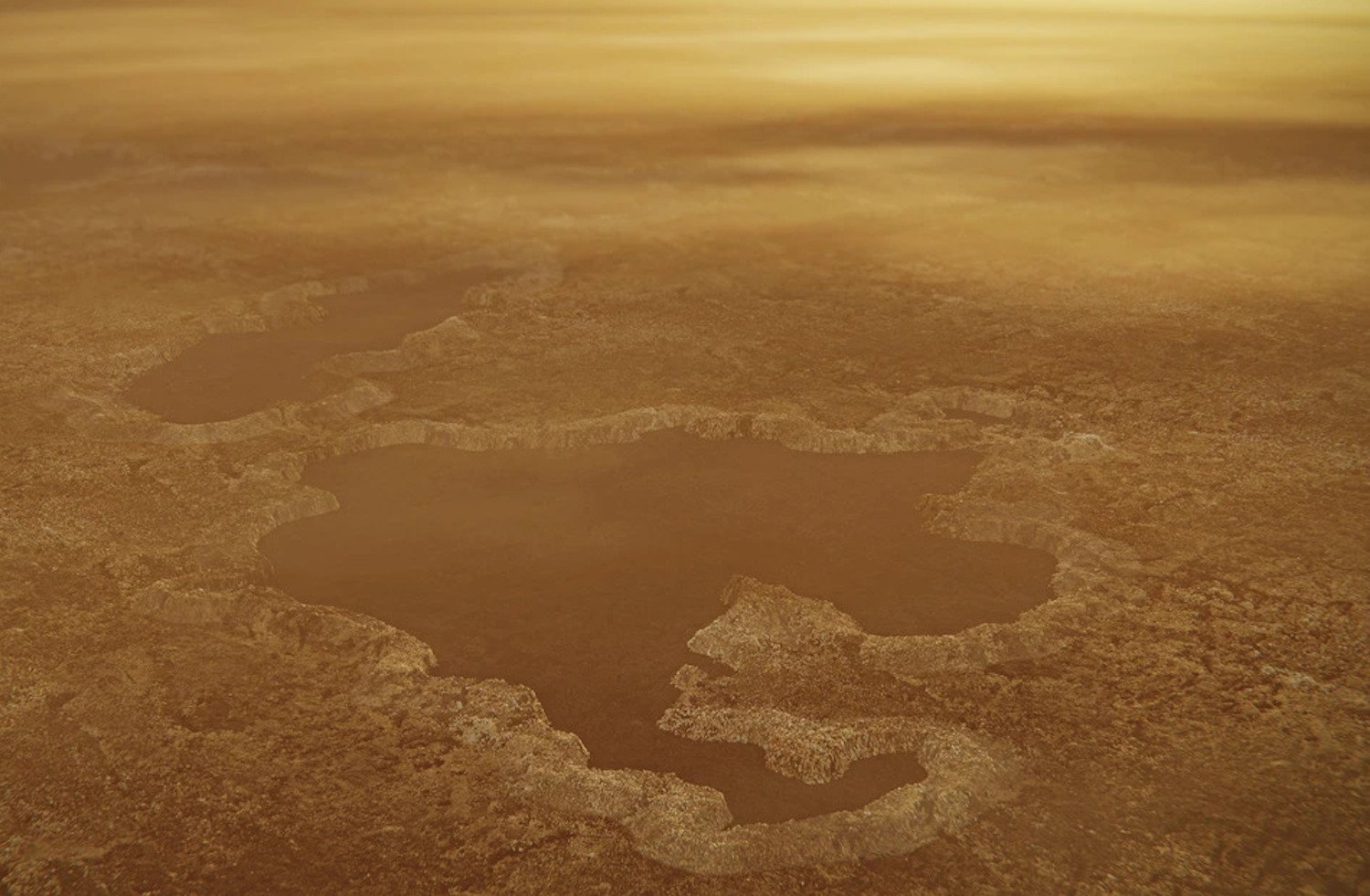Saturn’s moon Titan is often pegged as one of the worlds in our solar system where life could theoretically exist. A new analysis concludes that is indeed possible, albeit incredibly unlikely.
Titan is known for being the only moon in the solar system with a dense atmosphere, and it also has bodies of liquid, including liquid water hidden under deep shells of ice. But alas, with all that going for it, an international team of astronomers determined that conditions on Titan would only be able to sustain enough biomass to equal one moderately chunky cat.
It’s been 20 years since the Cassini-Huygens mission—a joint effort by NASA, the European Space Agency (ESA), and the Italian Space Agency—visited Titan. While the Cassini probe continued its journey through space, collecting data on Saturn and its moons, the Huygens lander separated to get an even closer look at one in particular. When it descended through the atmosphere and landed on Titan on January 15, 2005, it became the first human-made object to do so.
While there have been several places in the solar system that have been identified as being possibly hospitable to life, data collected by the probe indicated Titan could be among the likeliest candidates. Huygens found a dense atmosphere, where the chemical processes necessary for organic compounds (the building blocks of life) are able to form.
However, just as an egg yolk is not a chicken, organic compounds don’t necessarily indicate that life can form. To explore the possibility of microbial life on Titan, Antonin Affholder, a postdoctoral researcher at the University of Arizona, led a team to assess how likely that scenario might be. They did so by assuming that if life did arise on Titan, it would survive by one of the most primitive processes known: fermentation, in which an organism converts organic compounds to energy without using any oxygen.
Yes, the process you nonchalantly toyed with to make sourdough during covid-19 is a sign of life—life you used to make your avocado toast, but still, life.
They determined that the organic compound most likely to be involved in Titan fermentation is glycine, an amino acid valuable to building protein. Glycine has been found on Titan’s surface, but scientists wondered whether enough of it could make its way to the moon’s liquid oceans. Those oceans—where life would have the best chance of surviving—are buried beneath ice that’s 31 to 124 miles (50 to 200 kilometers) thick.
Unfortunately, the results are not favorable to anyone hoping to find microscopic ETs on the distant moon. As the astronomers explained in The Planetary Science Journal, it’s not a definitive no, but it does seem unlikely. At the very least, if there is life, there’s very, very little of it. The amount of glycine that would reach the liquid water would only be able to support 16.5 pounds (7.5 kilograms) of carbon. Again, that’s the weight at which most house cats are put on a diet.
“There has been this sense that because Titan has such abundant organics, there is no shortage of food sources that could sustain life,” said Affholder in a statement. “We point out that not all of these organic molecules may constitute food sources, the ocean is really big, and there’s limited exchange between the ocean and the surface, where all those organics are, so we argue for a more nuanced approach.”
“Such a tiny biosphere would average less than one cell per liter of water over Titan’s entire vast ocean,” he concluded.
A bit of a bummer, but hey, sourdough has gotten you through worse.




